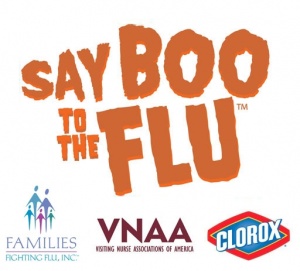The flu virus has yet to reach its peak this winter
By Stacy Beller Stryer, M.D.
Between seeing the hoards of patients with multiple days of high fever and sore throat; taking care of my own daughter who was sick almost an entire week; and trying to allay the fears of countless parents who read about the deaths of two teens in our community due to influenza, I am exhausted. There is no doubt that the influenza virus has arrived and is wreaking havoc in our community. According to the Washington Post, our region has just begun to see an increase in the virus but has not yet reached its peak. Each year, the virus peaks at a different time, usually between December and March, although we only know after-the-fact when the peak incidence occurred.
According to the Centers for Disease Control, approximately 5% to 20% of the United States population develops the flu, over 200,000 are hospitalized, and about 36,000 people die. This includes children, particularly those with chronic illnesses such as asthma and heart disease.
There are many different strains of influenza virus and each year the strain changes. Researchers try to determine which type will be most prevalent for that particular year and, based on this information, develop a flu vaccine with the three most likely types of influenza A and B. Even if scientists aren’t 100% correct, antibodies which are made against one strain can provide protection against different strains if they are closely related. In addition, it is possible that a related strain, while not entirely preventing an illness, can still decrease its severity and prevent flu-related complications. For this reason, the CDC recommends that everybody get the flu vaccine each year.
So, how do you know if your child has the flu and not another virus? Often it is difficult to tell the difference. People use the word “flu” liberally and often, when someone says they have the flu, they actually don’t. You must actually be tested for it to know if you truly have the influenza virus. However, if you followed me in my office for one day, even four hours, you would get pretty good at picking out who probably has the flu. The specific symptoms can vary somewhat from year to year but they tend to be much more severe than other viruses. In general, they include several days of high fevers, headache, dry cough, sore throat, runny or stuffy nose, extreme tiredness and sore muscles. The cough is usually the last symptom to go away.
The flu is spread from respiratory droplets, meaning people who cough and sneeze can spread the virus to others nearby. People are usually infectious about one day before they get sick until about five days after they become sick, although the infectious period can vary.
What can you do for your child? First of all, you can try to prevent them from getting the flu in the first place by getting the flu vaccine in the fall (or even in January or February if the peak hasn’t occurred), and by teaching good hygiene and hand washing techniques. You can also remind your children to stay away from others who are sick and to keep their hands away from their own faces.
If your child does get the flu, antiviral medications are sometimes an option to help decrease the severity and length of the illness, and to prevent potential complications. In order to be effective, however, it must be given within the first 48 hours of symptoms or before symptoms even develop. Each year, the Centers for Disease Control tests the flu virus in different regions throughout the country to see if the particular strains are resistant to the antiviral medications available. This year they have found that the influenza A is highly resistant to Tamiflu, one of the more common antiviral medications prescribed. Data so far shows that most of the circulating viruses this year are the “A” type. Tamiflu helps children feel better, on average, about 1.5 days before someone who has not taken it.
As a physician, I must watch for evidence of bacterial infections that have developed along with influenza virus in my patients. More common bacterial co- infections include pneumonia, ear infections, and sinusitis. Dehydration and worsening of chronic medical problems, such as asthma, can also occur. In 2006-2007, the CDC documented an increased incidence of staphylococcus aureus infections and methicillin-resistant staphylococcus aureus (MRSA) in patients who were hospitalized for influenza or who eventually died. If your child has symptoms that continue to worsen or that don’t begin to resolve after several days, or if your child has shortness of breath, blue lips, cannot speak full sentences or other signs of breathing problems, you should see a doctor immediately.











